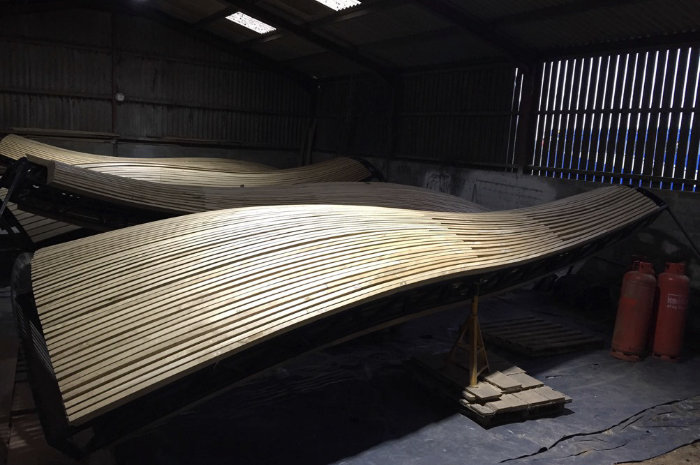Cusp
by Elpida Hadzi-Vasileva
"Nature is beautiful in that it appears to say more than it is."1
Cusp aims to act as a destination for visitors; offering a robust but natural-looking marker in the landscape, as well as narratives that can be read and re-read in diverse ways. It is an iconic form that entices the visitor, encouraging people to use their own imagination, both from a distance as well as in close proximity to the work.
The sense of what the work is and what it might be changes as people approach; adjusting perception, ideas and hypothesis as they perceive it and move towards it from a distance, whilst en route (getting closer), and once there. Arriving at the destination will not be an end but will be the beginning of another layer of experience and imagining, as you are invited to look closer, through slits and voids within the work, and to pass physically through the work. This telescoping of understanding and perception as the viewer moves towards, through and beyond the work is an important part of the intention of the design; to enable people to experience the work in differing ways.
Cusp engages with hidden aspects of a place, in particular ideas on dwelling. People in and on the land have been a key interest of mine, especially the sense of transitioning of populations based on interactions with changing nature, and the sense of living in a place as a community. Woodland historically offered a place to dwell for both people and nature yet forms of dwelling and permissions to dwell have changed in line with varying industries, rulers, and the laws of the land, sometimes causing conflict between peoples or on environmental grounds or for animal well-being. The design of Cusp aims to reflect the duality between the fixedness of the ‘dwelling’ at the base (or roots) of the work, and movement and opening as it grows upwards to the sky. At first sight it appears as part of the landscape, tree-like in form; closer still the ‘branches’, edged in gold leaf, might suggest the wings of a bird, or the opening of hands in a gesture of welcoming, giving and receiving, echoing the spirituality of people and place, past and present. Once the visitor reaches the destination, they are invited to dwell there for a time, before passing through and on, with different viewpoints framing and offering windows on what the viewer finds around them.
These markers in the land that the work will expose and frame (in its main openings, but also through slits between planks) include intersections, borders and divisions, the actions of rivers and roads on the landscape; opening vistas, acting as an in-between space, literally and metaphorically opening up a vision to different settings and ideas. The sculpture transforms the experience of viewing from one thing into another as the viewer moves to and through it, aiming to highlight the spiritual nature of being in a landscape - encouraging us to go, to look and to be.
The structure’s material is devised to consider how the natural elements might interact with the work and to allow openness to prevail in its form. Intricate metal trusses, with oak and red wood cladding, crafted into shape by the artist to allow the form to appear both solid and light, allowing resistance as wind and air touch it and pass through. This practical device also offers potential for natural sound to play a part in the experience of the work; the sense and sound of the air, a breeze or the wind, might circulate and interact with the form, suggestive of the uplifting movement and sounds of birds’ wings, exaggerating and honing the sensations of being in the landscape.
The gold leaf features are a signature element of many of my previous works and lend a form of ‘added value’ to the work and its concept – enhancing its visual presence and also its perceived value by association with gold.
1 ("Aesthetic Theory" by Theodor Adorno. Chapter 5 )











